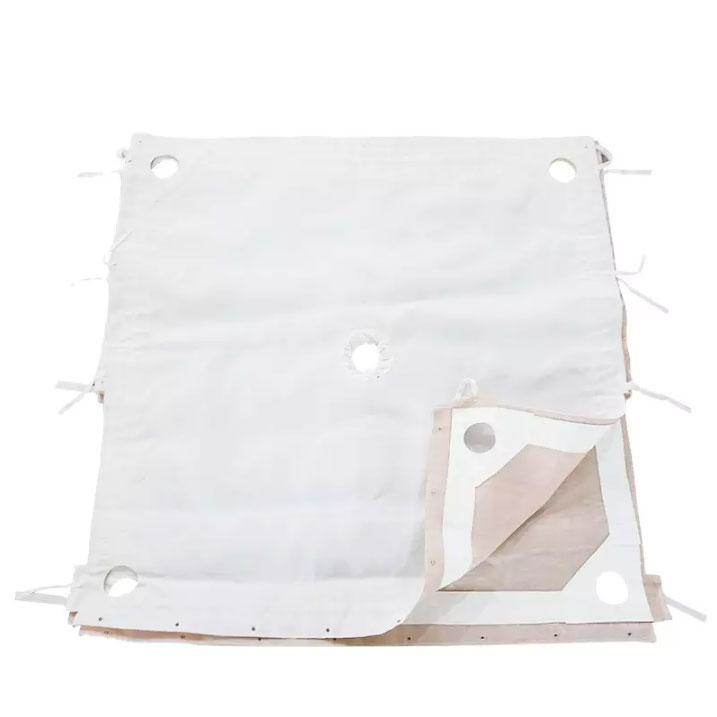How Does Drainage Filter Cloth Improve Construction and Landscaping Projects?
2025-10-14
Drainage Filter Cloth is a high-performance geotextile material designed to enhance soil filtration, water drainage, and structural stability in construction, landscaping, and environmental projects. This innovative fabric serves as a critical component in retaining soil while allowing water to pass through efficiently, preventing erosion, and maintaining the integrity of infrastructure. Its widespread adoption in civil engineering, road construction, sports fields, and landscaping reflects a growing demand for durable, cost-effective, and environmentally friendly solutions.
What Is Drainage Filter Cloth and How Does It Work?
Drainage Filter Cloth is typically made from high-strength polypropylene (PP) or polyester (PET) fibers, woven or non-woven into a durable sheet capable of withstanding soil pressures and water flow. Its main functions include filtration, separation, reinforcement, and drainage, ensuring long-term stability in construction projects.
-
Filtration: Allows water to pass while retaining fine soil particles.
-
Separation: Prevents intermixing of soil layers, preserving the intended engineering structure.
-
Reinforcement: Provides additional tensile strength to support soil and aggregates.
-
Drainage: Efficiently channels water away, reducing hydrostatic pressure and preventing soil erosion.
Technical Specifications of Drainage Filter Cloth:
| Parameter | Typical Value / Range |
|---|---|
| Material | Polypropylene (PP) / Polyester (PET) |
| Weight | 100–500 g/m² |
| Thickness | 1–5 mm |
| Tensile Strength | 15–50 kN/m |
| Elongation at Break | 30–50% |
| Water Permeability | 50–500 L/m²/s |
| Filtration Accuracy | 0.075–0.425 mm |
| Operating Temperature | -30°C to 90°C |
| Chemical Resistance | Resistant to acids, alkalis, salts |
| UV Resistance | Up to 500 hours exposure |
How it works:
When applied in soil retention systems, drainage filter cloth acts as a barrier against sediment transport, while simultaneously facilitating water flow through its porous structure. Its non-woven fibers form a stable network, allowing high water permeability without soil loss, making it ideal for applications like retaining walls, road subgrades, landfill liners, and drainage systems.
Why Is Drainage Filter Cloth Essential in Modern Infrastructure?
Erosion Control and Soil Stabilization
One of the primary challenges in civil engineering and landscaping is soil erosion caused by water movement. Drainage filter cloth acts as a protective layer, preventing soil displacement while maintaining proper drainage. For instance, in embankments or riverbanks, the cloth ensures that fine soil particles do not wash away, reducing maintenance costs and enhancing longevity.
Enhanced Drainage and Water Management
Improper drainage can lead to structural damage, flooding, or waterlogging. Drainage filter cloth is designed to channel water efficiently, reducing hydrostatic pressure behind retaining walls, sidewalks, or road surfaces. Its ability to maintain consistent water flow prevents soil saturation and maintains the integrity of the structure.
Longevity and Cost Efficiency
By separating soil layers and distributing pressure evenly, drainage filter cloth prolongs the lifespan of construction projects. This reduces repair and replacement costs, while minimizing downtime during maintenance. Its chemical and UV resistance ensures durability even in harsh environmental conditions.
Environmental Benefits
Drainage filter cloth also plays a critical role in sustainable construction. By controlling sediment runoff and preventing soil contamination, it minimizes environmental impact on nearby water bodies. Its long service life reduces material waste compared to traditional gravel drainage systems.
How to Choose and Apply Drainage Filter Cloth Effectively?
Selecting the right Drainage Filter Cloth depends on project requirements, soil type, water flow, and load-bearing needs. Following best practices ensures optimal performance and cost efficiency.
Key Considerations in Selection:
-
Material Type:
-
Non-woven PP/PET: Ideal for filtration and separation in soft soils or landscaping.
-
Woven PP: Suitable for heavy-duty reinforcement, road subgrades, and embankments.
-
-
Weight and Thickness:
-
Light-weight fabrics (100–200 g/m²) are suitable for landscaping or garden drainage.
-
Medium to heavy-weight fabrics (250–500 g/m²) are recommended for highways, retaining walls, and civil engineering projects.
-
-
Permeability and Filtration Accuracy:
-
Ensure water flow rate meets drainage requirements without compromising soil retention.
-
Fine filtration (0.075–0.15 mm) for sandy soils; coarser filtration (0.2–0.425 mm) for gravel or coarse aggregates.
-
Application Guidelines:
-
Preparation: Clear debris and level the surface before laying the fabric.
-
Installation: Unroll the cloth along the drainage path, overlapping sheets by 15–30 cm to ensure continuous coverage.
-
Securing: Fix with stakes or pins in landscaping, or secure with soil/aggregate in civil engineering applications.
-
Covering: Place gravel, soil, or aggregates on top as per project design to ensure weight distribution and structural integrity.
Proper installation maximizes drainage efficiency, soil retention, and durability, ensuring the project remains stable under environmental stressors such as heavy rain or freeze-thaw cycles.
Common Questions About Drainage Filter Cloth
Q1: Can Drainage Filter Cloth withstand heavy vehicle loads?
A1: Yes, high-strength woven polypropylene drainage filter cloth is specifically designed for heavy-duty applications. With tensile strengths up to 50 kN/m and elongation rates of 30–50%, it distributes pressure effectively and prevents soil deformation under traffic loads, making it suitable for highways, airport runways, and industrial yards.
Q2: How long does Drainage Filter Cloth last in outdoor conditions?
A2: Non-woven PP and PET fabrics with UV and chemical resistance can last 20–25 years under normal environmental exposure. Protective covering with gravel or soil further extends lifespan by preventing direct sunlight degradation, abrasion, and mechanical damage. Maintenance primarily involves inspection for clogging or damage in drainage systems, ensuring continued performance.
Emerging Trends:
-
Eco-friendly Materials: Increasing use of recycled polymers for sustainable projects.
-
Smart Geotextiles: Integration of sensors for real-time monitoring of soil moisture and drainage efficiency.
-
Custom Designs: Tailored filtration properties and tensile strength for specific engineering challenges.
By understanding these factors, engineers and project planners can make informed decisions, ensuring efficient water management, soil protection, and long-term structural stability.
Drainage Filter Cloth from the Star combines durability, high filtration efficiency, and environmental compliance, making it a reliable choice for civil engineering, landscaping, and infrastructure projects. For project inquiries, installation guidance, or to request a sample, contact us today to explore the full range of solutions tailored to your specific needs.




